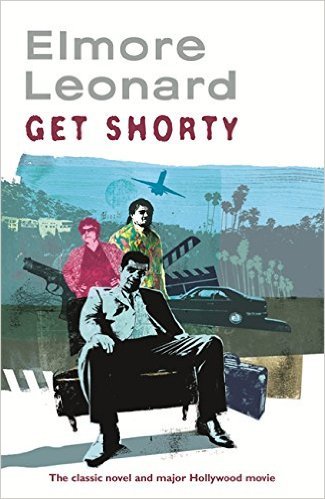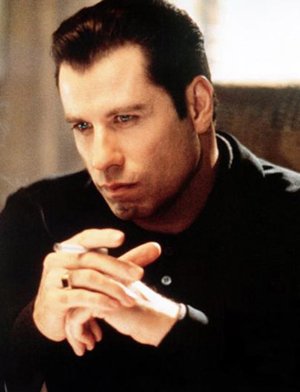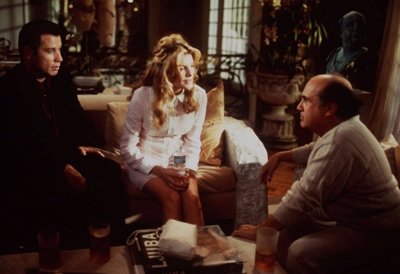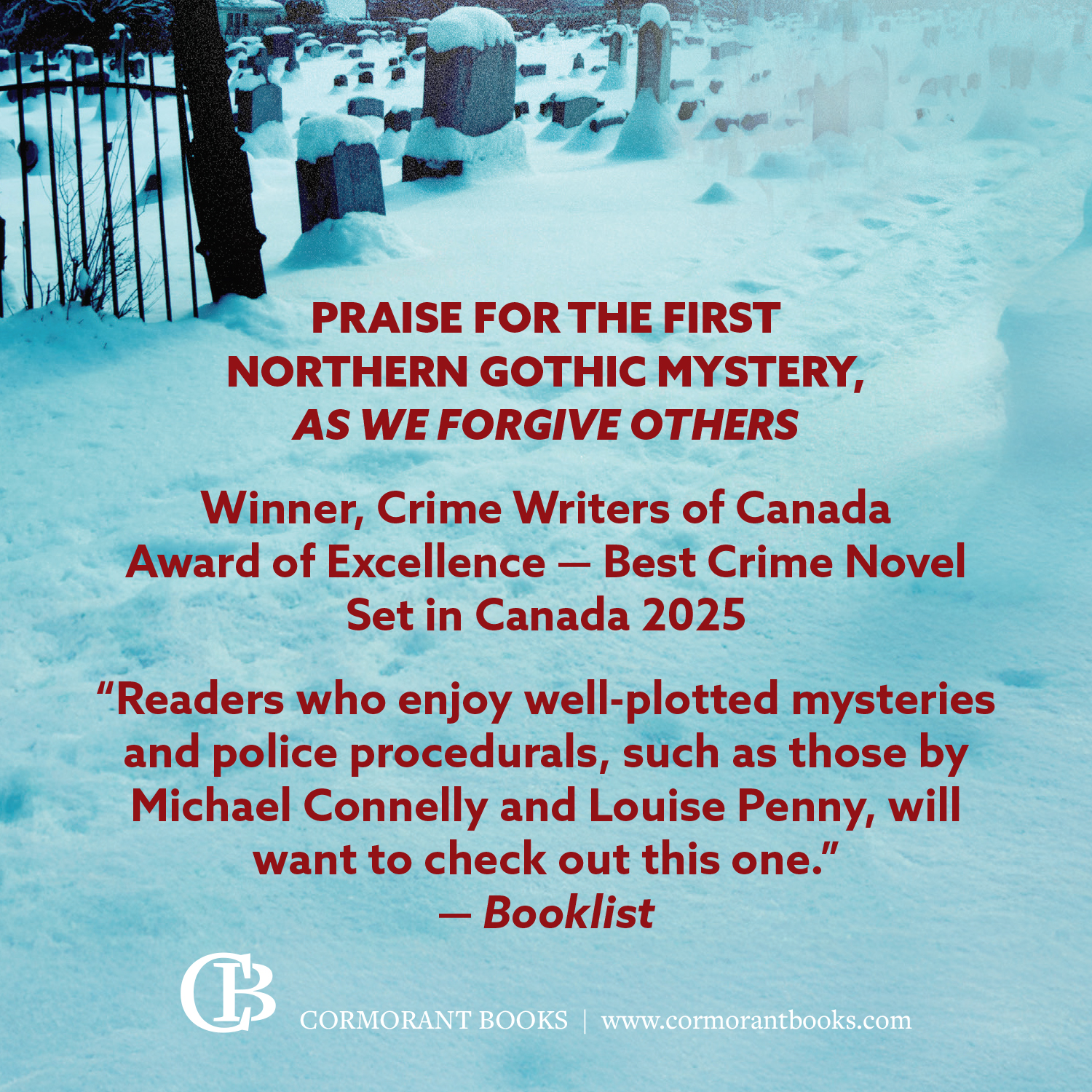
 When you look at a book by Elmore Leonard (1925-2013), it’s hard not to spend a moment thinking about the great crime writer himself. Though he was born in New Orleans, from the age of nine he lived in Detroit, and some of his most memorable books were set there, amidst the disruptions of a declining one-industry town with a fine gangster tradition.
When you look at a book by Elmore Leonard (1925-2013), it’s hard not to spend a moment thinking about the great crime writer himself. Though he was born in New Orleans, from the age of nine he lived in Detroit, and some of his most memorable books were set there, amidst the disruptions of a declining one-industry town with a fine gangster tradition.
Leonard’s first books were westerns, several of which were made into movies. Today, he’s most known for the mystery and crime fiction that he began writing in the 1960s. If you’re familiar with his work only from movies like 52 Pick Up, Jackie Brown (adapted from Rum Punch) or Out of Sight, you owe it to yourself to go back to the original. Not until Get Shorty did a movie capture his style so perfectly.
Beyond the fiction itself, Leonard’s 10 Rules for Good Writing are legendary among genre authors – including the 11th rule that sums up the other 10: “If it sounds like writing, I rewrite it.”
Reading a Leonard novel is like taking a graduate seminar in constructing dialog. He boils people’s words down to the essential and ellides meaning like natural speech. Maybe that’s why his books’ cadences seem like they would translate so easily into film. Here’s a bit from Get Shorty between loan shark Chili Palmer and Hollywood producer Harry Zimm about two shady characters they’ve just met. Chili speaks first:
“They scare you.”
“What’d I just say?”
“I’m not sure. You want to say something to me, Harry, say it, don’t beat around the bush.”
“Okay, they scare me. I keep thinking the first thing they’d do is break my legs.”
“You got that on the brain. What’s the second thing?”
“Or they’d have it done – you don’t know these guys. They’re not exactly financial types.”
“Harry, I prob’ly know ʼem better than you do. What you’re telling me,” Chili said, “they got more out on the street than limos.”

Crime author Elmore Leonard
The 1995 movie Get Shorty, based on the 1990 book, was one of 27 or so stories by Elmore Leonard to be made into films. Get Shorty had a follow-up in the 1999 book (and 2005 film) Be Cool. In both films, John Travolta plays former Miami shylock Chili Palmer and Danny DeVito the mercurial, vertically-challenged actor Martin Weir. Now television is going to take a swing at it, in one of those re-imaginings like the TV series Fargo only loosely based on the same characters, with new names, and with none of the original plotlines. At the time of writing, the TV cast is expected to include Chris O’Dowd and Ray Romano in the 10-episode series.

Travolta as Chili Palmer
Can’t get enough Chili Palmer
What is it about Get Shorty that makes readers – and movie and TV producers, too – keep returning to it? One of its chief strengths is the character of Chili Palmer. I cannot keep John Travolta’s Golden Globe-winning performance out of my head, even when reading the book again. Palmer is complex. On one hand, he worked for the Miami mob and knows how to shake people down, how to turn situations to his advantage. On the other hand, he’s disarmingly direct about what he wants.
The complicated plot has him going from Miami to Las Vegas to right what he sees as a wrong and collect a debt arising from an insurance scam. There, he picks up some freelance work – collecting a different debt from hard-luck film producer Harry Zimm – which takes him to Hollywood.
Chili turns out to be a knowledgeable film fan, charmed by the possibility of becoming involved in the motion picture business. He pitches Harry the story of the scam that took him to Las Vegas in the first place and manages to drum up a respectable level of interest in his idea. He soon encounters more chicanery and double-dealing in Tinseltown than on his worst day in South Florida. The array of colourful characters Leonard develops keep trying to thwart Chili, but he just keeps moving forward, working on his movie deal, staying out of jail, avoiding the Miami gangsters pursuing him, bedding the girl, and outsmarting his adversaries.
 The set-up and the humour
The set-up and the humour
In Leonard’s ironic set-up, Chili’s wiseguy motivations are more straightforward than those of the Hollywood snakes and entitled individuals he does business with. Chili knows who and what he is, and the Hollywood characters most definitely do not. In both book and film there’s a restaurant scene with Martin Weir, the prominent actor being wooed for both Harry’s and Chili’s films. Weir gives the waiter a complicated, detailed off-the-menu request, then leaves for other engagements before his customised dish can even arrive. The self-absorbed actor is supposedly modeled on Dustin Hoffman, who engaged in a protracted contract dispute that led to cancellation of the movie adaptation of Leonard’s Edgar-winning novel LaBrava. Payback.
By the time Leonard wrote Get Shorty, he’d worked in Hollywood for several decades, writing screenplays. He based the character of Chili Palmer – the outsider who outplays the insider – on a real-life Florida private detective and former loan shark Ernesto ‘Chili’ Palmer. Leonard had met the real-life version through his employer, a college classmate.
Leonard was a long-time admirer of Ernest Hemingway’s spare, unmodified prose, but thought Ernest was too true to his name and would have benefited from more humour. His own books supply it. There are the occasional scenes or lines that most people will laugh at – absurd, ridiculous stuff. You can call that humour of the head. Then there’s the unconscious humour that rises out of characters just being who they are, in which you sometimes see yourself and people you know. If you’re like me, that gets a laugh of recognition, and those erupt through an audience or in a reader of Leonard’s work less predictably, but often. It’s humour of the heart.
Classics in September 2016 is sponsored by Bloomsbury Reader.










Maybe it’s a mark of his greatness as a writer, maybe weird coincidence, but it’s remarkable how well his novels translate to the screen. Leonard’s humor, his sense of romance, and his familiarity with abject terror work pack the same potency on celluloid as on paper. I experience all three (not to mention a healthy dose of Isley Brothers funk), with every viewing of Out of Sight.